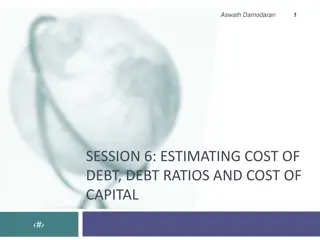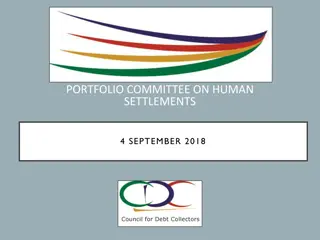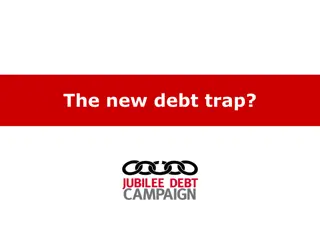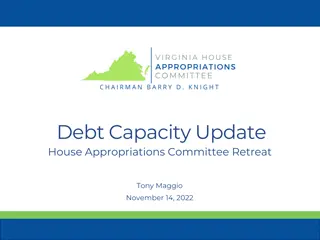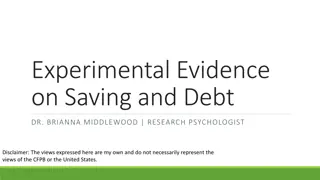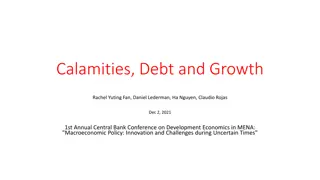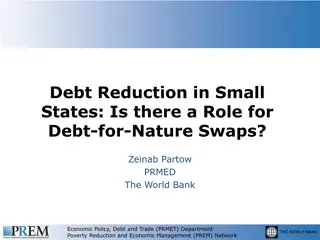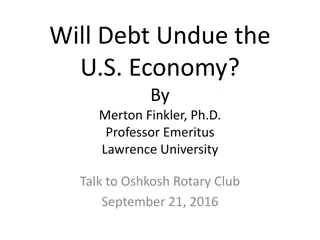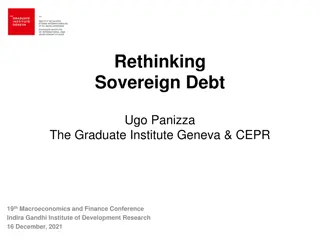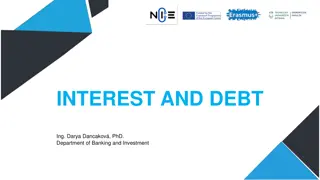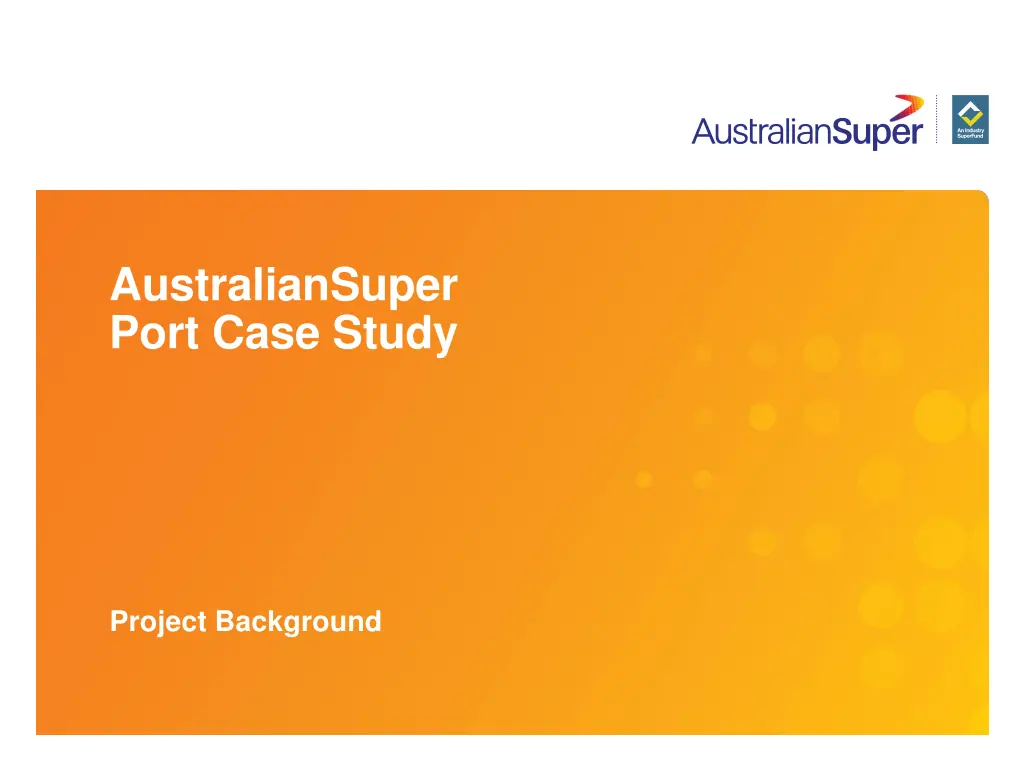
AustralianSuperPort Case Study Project: Privatization of a Monopoly Container Port
Explore the investment potential of an Australian container port privatization project through a 99-year lease. Analyze credit risks, revenue streams, costs, capacity, and expansion plans to assess the value proposition. Financial insights and key metrics included.
Download Presentation

Please find below an Image/Link to download the presentation.
The content on the website is provided AS IS for your information and personal use only. It may not be sold, licensed, or shared on other websites without obtaining consent from the author. If you encounter any issues during the download, it is possible that the publisher has removed the file from their server.
You are allowed to download the files provided on this website for personal or commercial use, subject to the condition that they are used lawfully. All files are the property of their respective owners.
The content on the website is provided AS IS for your information and personal use only. It may not be sold, licensed, or shared on other websites without obtaining consent from the author.
E N D
Presentation Transcript
AustralianSuper Port Case Study Project Background
Project Summary A European Government is looking to privatise its port through offering a 99 year lease to the private sector. You are considering an investment in a mezzanine loan and need to consider the credit risks associated with this facility including what you think the value of the port is. Financial Close will occur on the 30th of June 2020 The port is the only major container port in the state and is a monopoly asset with no direct competitors. Delivering containers over land from other states is not efficient and does not occur The port is a landlord port , meaning the successful tenderer will own the rights to the port s civil infrastructure and allow stevedores and other operators to provide the port services . In return, the landlord will receive revenue from two main income streams being through charging: 1. shipping companies a fee on all containers which pass through the port; and 2. stevedores and other parties a property leasing fee on area within the port which is sublet to those parties Costs associated with the business are largely around corporate support, administration and property leasing. The hard assets of the port relate only to the civil infrastructure (ie: port land, sidings, rail tracks on the port) Given the port is a landlord port, the margins of the business are relatively high >85% Price increases are subject to a light handed regulatory regime, meaning the government reviews price increases, but does not mandate them unless prices are considered out of market and increases are too high The attached Excel spreadsheet summarises the key financial information for the business 2
Revenue The port currently has 1 million containers passing through it per annum (including both imports and exports) . The port currently has the ability to handle 1.5 million containers per annum before reaching capacity Container volumes are driven 40% by GDP growth and 60% by World Trade growth. The AustralianSuper macroeconomics team, believes that the long run GDP growth will be 3%pa and World Trade will grow at 5%pa The port currently charges $100 per container which passes through the port (for both incoming and outgoing containers). These charges increase by CPI annually. The property leases increase at CPI + 1.5%pa during the lease term. Market rent on the property is currently $80m pa. All prices (both container and property) are indexed once a year The AustralianSuper macro team assumes that CPI increases at 2.5% pa 3
Costs and Capex Currently port expenses are $30m pa. This includes all employee related costs and corporate support, but excludes capex. These costs increase at CPI each year The port recently had considerable expansionary capex spent on it. As a result of this it is not expected that any expansionary spend is required until the port hits its container capacity. 24 months before capacity is hit, AustralianSuper forecasts $200m will be spent on the ports, which will provide additional capacity of 1.5m containers. The construction time will be 24m with all the $200m spent upfront in one lump sum amount at the start of the year. The expansion capex escalates at CPI. The funding of the expansionary capex will be through a capex facility. This is an interest only facility Annual maintenance capex is $8m pa. This increases with CPI each year and financed through the existing cash flow of the business. 4
Key Financing Assumptions Senior Debt Banks are willing to lend to the consortium up to a point where the cash flow available for debt service (CFADS) is no less than 2.25x the interest costs forecast in the following year. CFADS is the net of all revenue, expenses and capex. The all in cost of the senior debt is 3%pa (including base rate, margins, swaps etc), with interest paid annually (assume no debt upfront fees) The debt is an interest only loan, with an additional growth capex drawn down from the debt facility. Note if there is insufficient cashflow to pay interest, assume the interest is capitalised (added to debt balance) Debt is refinanced every 5 years to the same metrics (with no additional refinancing costs). Assume there is no refinance in the final year (Year 20). Mezzanine Debt AustralianSuper is considering lending to the consortium up to a point where the cash flow available for debt service (CFADS) is no less than 1.25x the consolidated interest costs (senior + mezzanine interest) forecast in the following year. CFADS is the net of all revenue, expenses and capex. The all in cost of the mezzanine debt is 5.5% pa (including base rate, margins, swaps etc), with interest paid annually (assume no debt upfront fees) The debt is an interest only loan, Note if there is insufficient cashflow to pay interest, assume the interest is capitalised (added to debt balance) Equity The equity returns required for this type of investment is 8% pre tax and fees Equity distributions are made every 12 months from financial close Terminal Value Building a 20 year cashflow model/ spread sheet (see template). To ensure the value of the asset is considered beyond year 20, assume a terminal value of 15x the final year EBITDA. (Note: this is the assumed value of the operating cashflows beyond the final year) 5
Valuation Questions and Outputs You need to provide a recommendation to the investment committee on how much you think the Port is worth Key ratios including EV/EBITDA Gearing Provide a number of sensitivities on the cashflows (as shown on page 8) A suggested model template is provided, however this is just a suggestion and you don t need to stick to the format. (You might actually be able to put together with a simplified spread sheet to come to the above results) 6
Debt Questions and Outputs You need to provide a recommendation to the investment committee on whether we should consider the mezzanine facility. As part of this it is recommended you comment on the following Key ratios including CFADS headroom before breaching Senior ICR lockup of 1.50x Consolidated ICR Consolidated Debt/EBITDA Loan to Value Loan Life Coverage Ratio (LLCR): note this assumes a scenario of a 20 year concession as opposed to base case 99 year concession. Provide a verbal view on how you would consider the relative value between investing in the mezzanine loan or the equity What is the difference between Consolidated ICR, Consolidated Debt/EBITDA, Loan to Value and Loan Life Coverage Ratio when considering credit risk (what are they trying to show) What rights or protections would you seek under 1) an inter-creditor with senior lenders and 2) from Equity Sponsors What are the qualitative factors you would want to understand about the transaction/business in undertaking further due diligence Assuming a separate scenario where the port concession was 20 years instead of 99 years. When looking at the LLCR, how would you think about the refinance risk and any need for amortisation in this scenario. 7
Sensitivities To test the robustness of the cashflows, you will need to run a number of sensitivities including the following: Impact of -1% pa GDP growth Impact of -3% pa World Trade growth Impact of +/-0.5% pa CPI assumptions Impact of a +0.5% pa change in the debt rates beyond year 5 Impact of 1% lower growth in property market rates Key outputs from the sensitivities are: Impact on IRR Impact on the NPV of asset (ie: how much less would be paid for the asset to generate the required return) Opening consolidated Loan to Value Ratio Minimum Senior Interest Coverage Ratio 8







